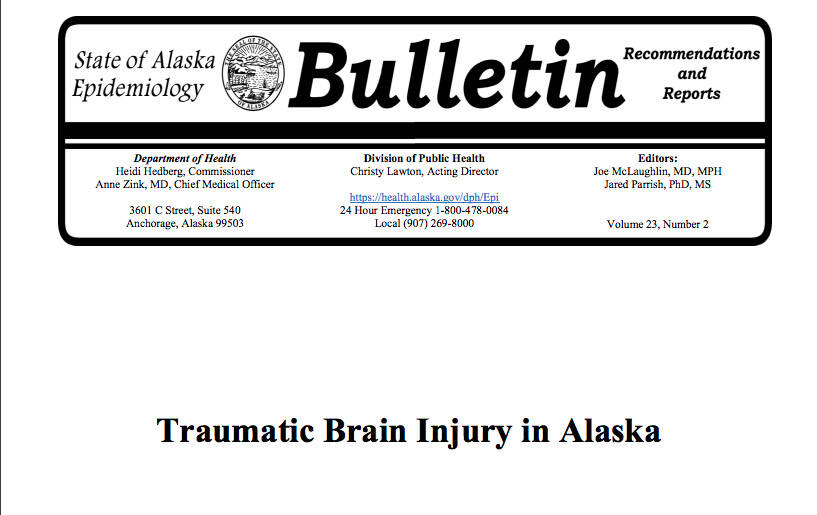Deaths as a result of traumatic brain injuries were happening at a rate in Alaska higher than anywhere else in the United States between 2016 and 2021, according to an Epidemiology Bulletin published by the Department of Health on Tuesday.
A TBI, the report says, is a “bump, blow or jolt to the head, or a penetrating head injury that disrupts normal brain function.” They can result in unconsciousness, death or other issues.
In people under 30 years of age, one in four deaths in Alaska followed a TBI. That stat includes suicide by gunshot, which is a TBI and accounts for 43% of TBI deaths in Alaska, according to the report. For men 15-30 years of age, that number increases to 63%.
The rate of deaths from a TBI attributed to suicide in Alaska residents aged 24-34 is more than three times the national average.
Though Alaska led the nation in deaths resulting from traumatic brain injuries, at 1,527 between 2016 and 2021, the report says that the number of hospitalizations as a result of TBIs are lower than the national average in most of those same years.
The reason for that gulf is due to the the lack of access to health care and especially neurological specialists in much of the state, as well as the prevalence of suicide and outdoor recreation, especially motor vehicles like ATVs and snowmachines, the report says.
“The findings from this report underscore the disproportionate impact of TBIs in Alaska compared to other states, the need for targeted TBI prevention efforts, and the need for increased access to appropriate treatment and supportive services statewide,” the report reads.
As part of a study described in the report, health professionals from around the state were asked about barriers to providing care to patients with TBIs. They cited a lack of TBI-specific training, especially on how to manage patients with TBIs and engage with people suffering from memory loss.
“Brain injuries often do not get identified or appropriately evaluated in my region of the state. We do not have qualified specialists to do this,” one provider is reported to have said.
Financial barriers, too, were described. The report says that people with TBIs and their families who were questioned as part of the survey said that they had difficulties paying for treatment, housing and transportation to medical facilities. “Many” also said they lost work as a result of their injury, further compounding the issue.
Deaths from TBI are also disproportionately affecting Indigenous communities, the report says. These groups represent up to 20% of Alaska’s population, but account for 29% of TBI deaths.
A part of that disproportionate finding is because of the use of ATVs and snowmachines in parts of Alaska where they are “critical lifelines for both transport and subsistence.” In the Southwest and Northern regions of Alaska, motor vehicle injuries replace unintentional falls as the most common cause of TBI hospitalizations.
“TBI’s are largely preventable,” the report reads. “TBI prevention saves lives, reduces associated disabilities, and saves costs both inside and outside of the health care system.”
To address the short- and long-term needs of those living with TBIs in Alaska, the report says that the public needs to be better informed about TBIs and available resources, that barriers need to be reduced, and several key causes of TBIs need to be addressed.
Some of the described preventive measures include suicide prevention programs, promoting safe storage of household guns, raising awareness about intimate partner violence and increasing education and providing access to helmets for ATVs and snowmachines.
To read the full report, visit epi.alaska.gov.
Reach reporter Jake Dye at jacob.dye@peninsulaclarion.com.

